7 things that make a Pakistani feel at home in India
By Tahir Mehdi
DAWN 01 October 2014
1. Honk, honk, beep, beep. Hey, you...!
A Pakistani driving license may not hold in India. But rest assured that a Pakistani’s road sense, cultivated through decades of weaving in and out of chaotic traffic, is exactly what one needs to be a great driver in India.
You are free to push, shove and honk your way to your destination, not to mention the abuses you can hurl at uncanny fellow drivers. The best feel-at-home experience, however, would be to pick up a fight with someone who has dared to trample over your ‘road ego’. You can simply play by your personal rule book and I assure you, no one would notice that you are a foreigner.
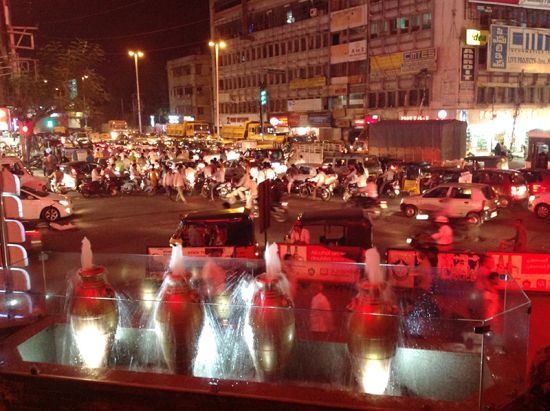
Hell of traffic – a view from Paradise biryani in Hyderabad

This is not a parking lot and the traffic is moving, believe me.
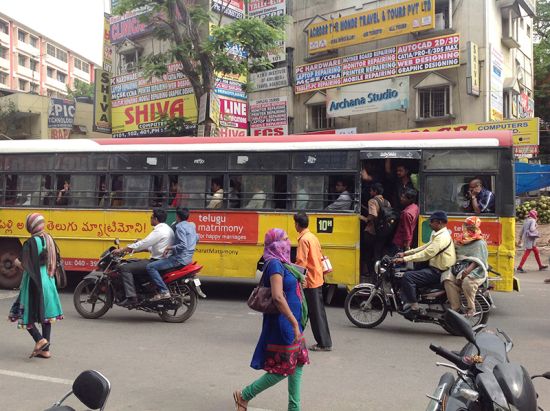
Equality on road – everyone has the right to use equal areas of all roads, including pedestrians, bikers, buses and cars.
2. Sweet tooth
India and Pakistan got rid of a foreign ruler together in 1947 and Muhammad Ali Jinnah refused to share the first Governor General with India. But we both still bow to the same local king, His Highness the Mango.
Some additions or omissions at an Indian fruit stall may surprise you (pleasantly), but the urge to indulge yourself while standing right there is pretty much the same.
You can even relate to all those coffee table talk, (or God forbid) pub chats attempting to prove that your favorite variety of mangoes is the only one with a blue-blooded lineage. If someone is all praise for Alphonso, don’t ask where he or she comes from, instead ask them:
“Aren’t you from Mumbai?”
Exactly how when when someone dares to belittle the Chuansa while trying to enthrone the Sindhri, and you can easily tell that your friend is from Sindh.
You can wear the same gleeful smile as you do in Pakistan, when you happen to visit a sweet mart. No shocks. I mean you can expect luddoos to be as round, gulab jamuns as dripping and jalebis as complicated as in Pakistan.
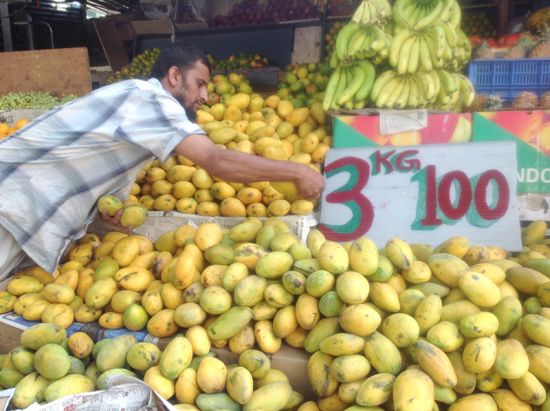
The mango season in India starts late in March and ends just when it kicks off in Pakistan – late June – with bilateral peace, both can make the aroma and the taste last longer!
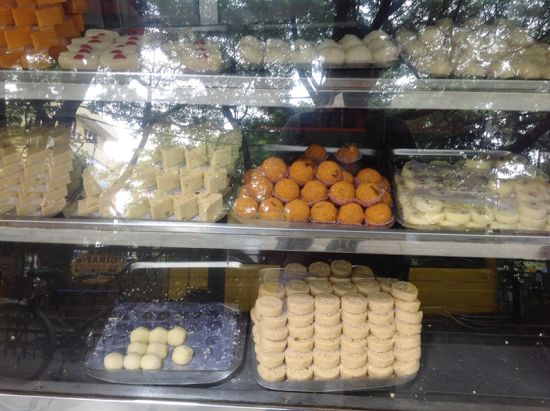
Just like there are many Jalandhri and Amritsari sweet marts on this side, there are many Lyalpuri and Lahori ones over there – recipes know no partition.
3. The 'key' factor
If you are staying in a hotel, you’re likely to miss this 'key' experience, but if you happen to have the joy of staying with an Indian friend or family member, you can relax.
You'll feel quite at home when all the mechanical fixtures – kundis, locks, taps and switches – start giving trouble.
No plug fits the socket. You can’t simply go to sleep and think the batteries will be fully charged by the morning. No tap provides water like a foreigner would expect it to.
“Hello, this is me. Did you give me the right key? It is not working.”
“Oh, sorry, I forgot to brief you. You have to push the door a bit and then press the key to the left before rotating it. It works that way.”
In other countries, like Europe, fixtures are so annoyingly accurate and obedient that you never get the chance to initiate idle talk with your hosts. But thank God, they don’t follow standard instruction manuals here.
They all come with ‘personalised’ instructions that are passed from one custodian to the other, usually accompanied by some interesting story. They can help you plug in, turn on and unlock so many personal barriers.

4. Sugar level and milky ways
If you order tea/chai in different countries, you will be served different hot beverages. In central Asia, you will get qahva; in the UK, black tea with sugar and milk provided separately, and in many other places, the order taker will either draw a blank or give you a rebuke. But expect no surprises when you're in India.
Chai is as chai on this side of the border as that, and it's served as sweet, milky and hot; though the doodh-patti may come with a different name, like some in Hyderabad call it ‘golden’. And it's all about upping the sugar-level in your bloodstream. Tea leaves are perhaps merely used as a colouring agent.
And yes, the beverage is at an arm’s length all the time, as stalls, kiosks, carts are omnipresent. If you ever go out of reach from one, don’t Google, just wait and a mobile supplier with a thermos and disposable cups will pop up soon.
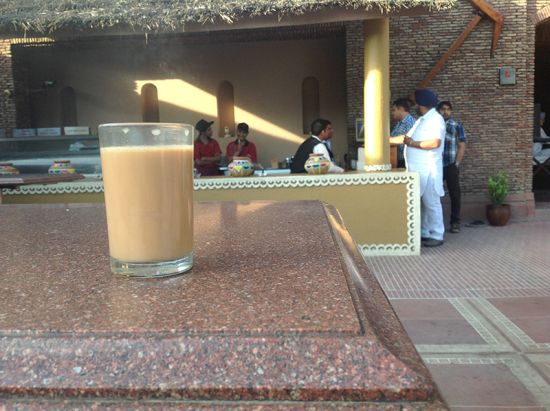
A hotel on Amritsar-Ludhiana Road took pride in its collection of profusely decorated symbols of Punjabi culture – most notably 'chhaties' (curd churners, lassi makers) – but made profit by selling tea.
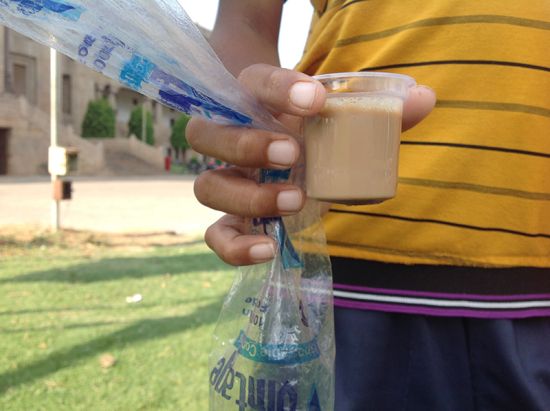
It's available literally everywhere. So you can serve yourself the customary cup of tea while waiting to meet someone at any public place.
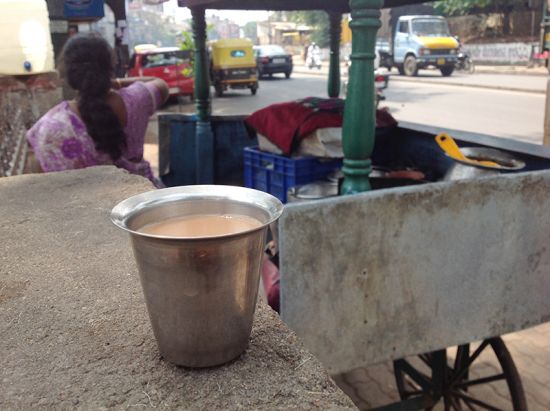
Been a long walk on the roads? Take a break and treat that low-blood sugar with another cuppa.
5. Ram and Raheem
For this, you'll need to be able to see through the surface, as only then you will realise that the ‘belief culture’ of the two countries is the same too.
Any tree that is old enough to boast of a spiritual self is occupied by some holy man. Though they use moortis instead of green flags as their sign posts, the donation box and the chain it's tied with is the same.
Every lorry, rickshaw and motorbike plies on road with the kirpa/barkat of an amulet dangling on some part of it.
The pious ones among the affluent middle class love to turn a portion of their house into a public place of worship where dars, vird, chants go on at full blown volume. No neighbour can dare raise an objection, and housing authorities prefer to look the other way.
A friend showed me the spire of a mandir, proudly describing it as the tallest construction in the entire town. I could relate to it, of course, coming from a country where mosque minarets compete with each other to touch the seventh sky.
Size matters, in both the countries in the same intriguing ways.
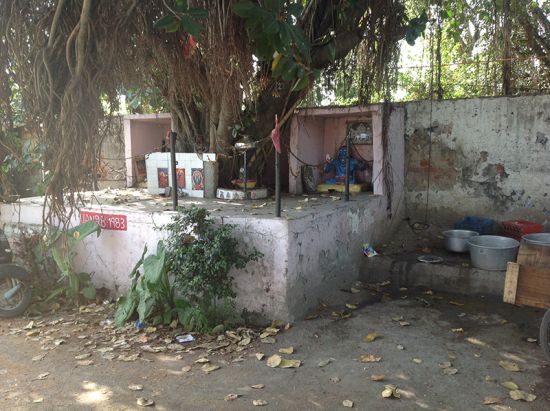
Old and majestic trees can’t refuse nestlings by spiritual enterprises.

A holy cow collects 'chanda' (alms/contribution) in a Bangalore bazaar.

A bus in Amritsar seeks divine blessings, and they do need lots of these to ply on roads.
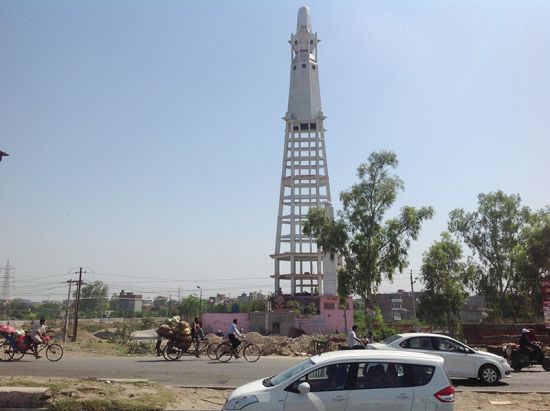
The mandir spire had to abandon the traditional method of construction and instead adopted the one used to build large water tanks to reach the skies.
6. Stalkers and strikers
Taking a stroll along a street or in a bazaar in India, the déjà vu is unavoidable; all the sounds ring so familiar, all the bells so natural.
You jump over a manhole right in the middle of a footpath.
You walk past a stray dog and a heap of garbage.
You deal with beggers with solid marketing strategies.
You carefully ‘find the path’ through the maze of street vendors displaying merchandise on the ground.
The hyperactive hawkers chant the same slogans with the same zeal. They stalk you and force you to buy something, if not for yourself then for bhaabhi or bachay. You can stop over for the same snacks, bhutta, samosay, pakoray, gol gappay, etc.
If it’s late in the night; it's a holiday; or a bandh or dharna is in progress, you can watch some street cricket with the same clumsy objects being used as wickets at the striker’s end and a pile of chappals marking the non-striker’s end.

'Ay, behan ji...bhayya...idhar a jao, sasta laga dia hey'

The ball got stuck behind a shop board and then they haggled over whose fault it was and how to retrieve it.
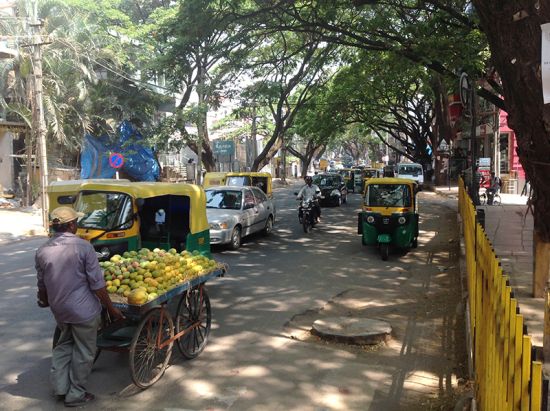
If a shop sign in local script is not in sight, you can’t tell which country it is.
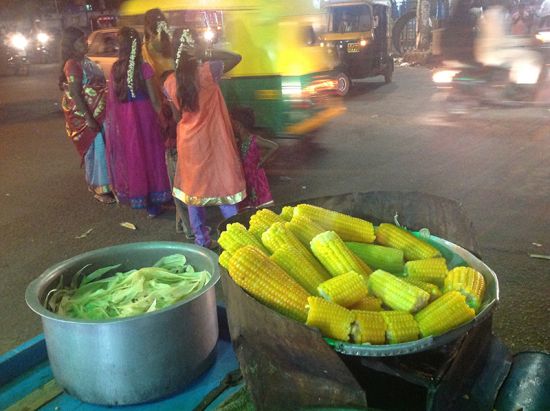
Inexpensive and familiar snacks can easily replace a full meal, especially if you are chasing a busy schedule.
7. Water, water everywhere and lots of it to...
I've written about how homely it feels when kundis and taalas diligently follow personalised instructions instead of going by the book. So when you are done with securing your privacy settings in a toilet, there's a bigger and more pleasant surprise waiting for you. There is a lota!
And you don’t have to feel guilty about making the floor wet either. Those who have travelled to ‘developed countries’ can better appreciate and value this great luxury. There is no better perk than this to make a Pakistani really feel at home in India.